Bats
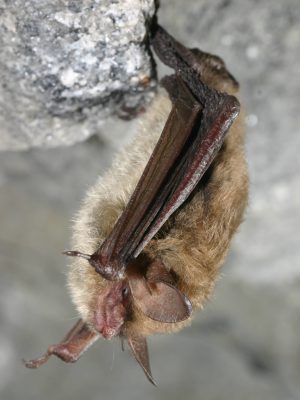
Protecting Bats
Now more than ever, we recognize the importance of bat conservation. An informative article by Discover Magazine details us how It’s Wrong to Blame Bats for the Coronavirus and essential to protect them. As the article explains, “normally, [viruses] remain hidden in bats’ bodies and ecosystems without harming humans. People raise the risk of transmission between species when they encroach on bats’ habitats or harvest bats for medicine or food. In particular, humans pack live bats into unsanitary conditions with other wild species that may serve as intermediate hosts. This is what happened at the Wuhan wet market where many experts believe COVID-19 emerged.”
So instead of punishing bats, we should be promoting the conservation and protection of these amazing mammals. Bats are critical in our ecosystem as they pollinate hundreds of species, including many important agricultural crops (including agave, the source of tequila), eat insect pests that can be harmful to native vegetation and crops, and provide fertilizer in the form of their guano.
About Long Island Bats
In the warmer months, bats can be found flying around the tree-line as they hunt for insects. They usually can be seen around early dawn or dusk and are most abundant around bodies of water (like streams or ponds) where a lot of flying insects might be congregating. Then in the winter, bats will take shelter, or hibernate. Bats can also be found in people’s homes or buildings as they are looking for a place to roost, a place to live, in the summer or possibly hibernate in the winter.
There are ways you can help us protect these amazing creatures!
You can tell us where you see bats! Bat Map Long Island is a citizen-science project designed to collect information about bats across Long Island. Data submitted by volunteers through the Bat Map app will inform efforts to identify important foraging and roosting areas, and perhaps even overwintering locations on Long Island. Experts will visit locations where Bat Map users identify significant bat activity to gather additional information with bio acoustical equipment.
Participants are only asked to report where and when bats are seen – species identifications are not required. The Bat Map data submission form can be opened in your web browser or within the Survey 1-2-3 app.
Buy or Build a Bat House! Living in a suburban area, it can be more difficult for bats to find a safe place to roost in the summer. These homes are places where bats will live, and even give birth and rear their young! There are many websites out there with tips and tricks on how to build bat houses, and the best places to buy them. Watch our video on “How to Build a Bat House,” and find more information at The Nature Conservancy, and Bat Conservation International. You can also buy bat houses from some of these reputable sites, Austin Batworks, Habitat for Bats, Bat Conservation & Management, Bat BnB, and JCs Wildlife. Your bat houses should be installed at least 10-12 feet above the ground, in an area where you receive at least 6 hours of sunlight, and near a water body or trees but not directly on a tree. Learn more on bat house installation and placement at Bat Conservation & Management.
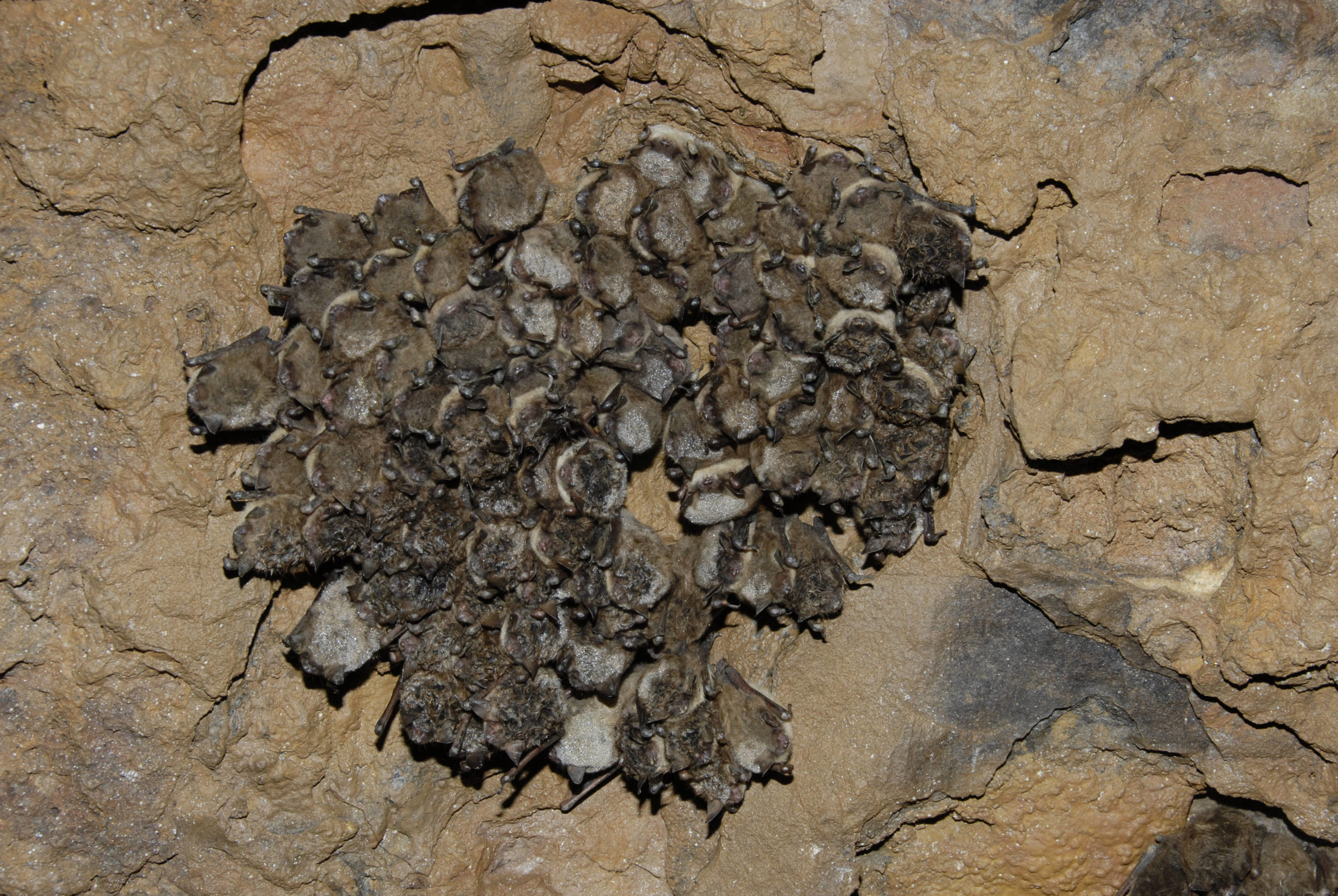
Bats on Long Island
Little Brown Bat (Myotis lucifugus) Wingspan: 8‒9”; Body Length: 2” The most common bat in New York State. This is probably the bat you see flying low over water on a summer evening.
Tri-colored Bat (Perimyotis subflavus) Wingspan: 9”; Body Length: <2” (Formerly known as the Eastern Pipistrelle) Widely distributed in New York, but always in low numbers. Distinguished from other bats by its yellowish-orange fur. They can be seen chasing insects at tree-top level early in the evening.
Big Brown Bat (Eptesicus fuscus) Wingspan: 13”; Body Length: 3” The largest of New York’s cave bats and the most tolerant of cold temperatures and low humidity. One of two bat species that raises its young in buildings as well as trees.
Northern Long-eared Bat (Myotis septentrionalis) Wingspan: 9”; Body Length: 2” Commonly seen in summer months. Its large ears and high-frequency call enable it to fly through dense forest.
Eastern Red Bat (Lasiurus borealis) Wingspan: 12”; Body Length: 2‒2 1/4” Historically, red bats were reported migrating in large flocks during the daytime, but such sightings are now rare. They roost low in trees among dense foliage.
Hoary Bat (Lasiurus cinereus) Wingspan: 16”; Body Length: 3 1/2” The largest of all New York bats. More of a northern species, they are most abundant in the Adirondacks.
Silver-haired Bat (Lasyionicterius noctivagans) Wingspan: 11”; Body Length: 2‒2 1/3” Perhaps the least frequently encountered bat species in the Northeast during summer months. As its name implies, it has silver–tipped hairs on its nearly black body
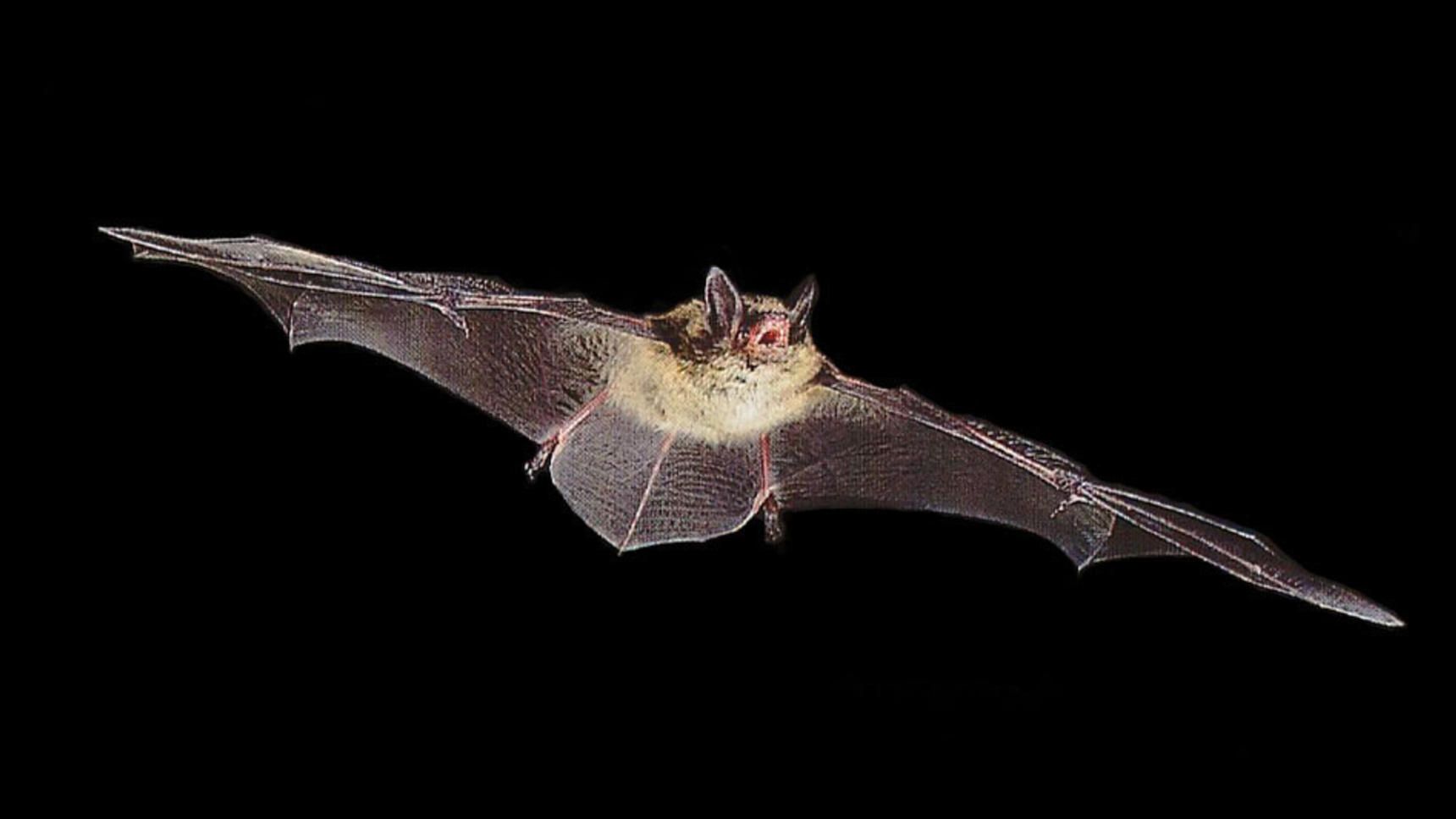
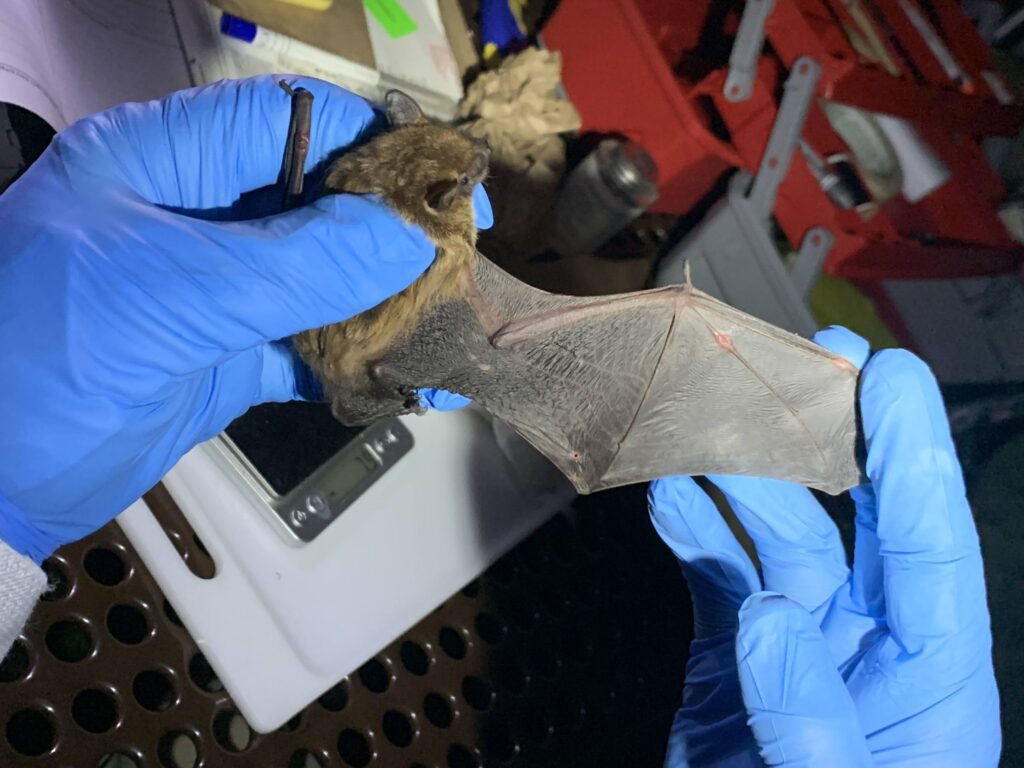
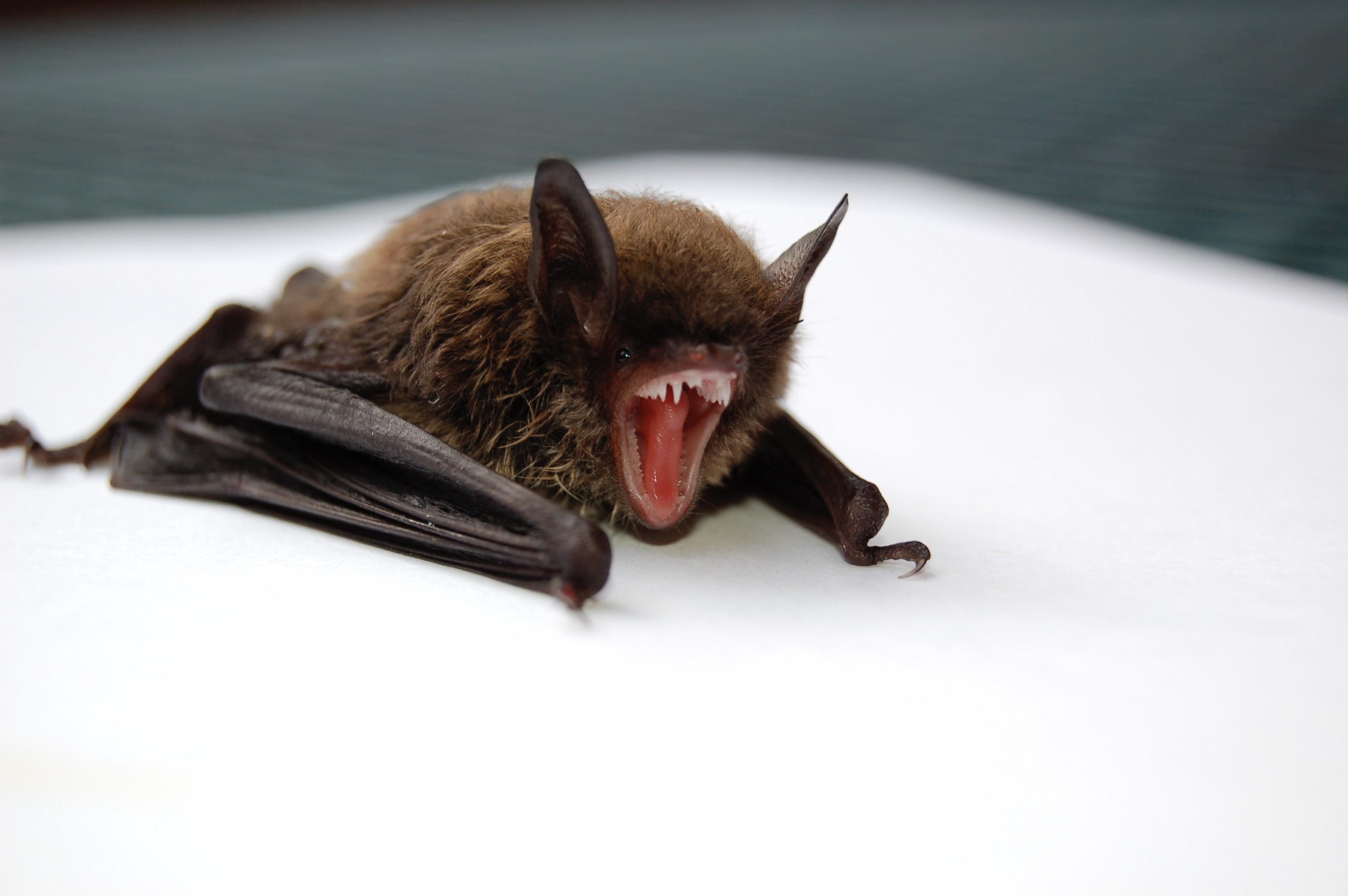
Bat Facts
Bats make up a quarter of all mammals; there are 1,200 species worldwide.
Bats are the only mammals able to fly.
Bats fly with their fingers; their wings are finger bones covered with a thin layer of skin. Wings make up 95% of their body surface area.
Bats are not blind! They can see quite well and
also use echolocation by emitting high-pitched squeals (inaudible to humans) through their mouth or nostrils. Their large ears detect the sounds that are bounced back from objects as thin as a human hair.
Fact Check: Bats don’t get tangled in human hair!
A colony of bats can cut down on unwanted mosquitoes around your yard. A single brown bat can catch as many as 1,200 mosquito-sized insects in one hour.
Bats emerge from their caves and crevices in the evening hours, when insects are still active. The largest colony in the world is in the Bracken Bat Cave in Texas, home to more than 20 million bats; their emergence looks like a thunderstorm on scientists’ radar! They eat over 200 tons of insects in one nocturnal foray!
Good news: Bats have a relatively long life span, and some species live to be 30 years old. Bad news: Populations of more than half of all bat species in North America are in decline.
Smallest bat: the bumblebee-sized Kitti’s hog-nosed bat from Thailand. Largest bat: the giant golden-crowned flying fox from the Philippines—it has a 2-foot body and 6-foot wings!
Bats that feed on frogs can tell the difference between edible and poisonous species by listening to the male frog’s call. Some bats use echolocation to detect the surface ripples made by a fish, then swoop in to scoop it up.
Bat guano is used as a fertilizer, and during the U.S. Civil War it was used to make gunpowder.
Overall, these charismatic animals have featured in great literature, popular culture and myth. In many cultures, including Chinese, they are symbols of good luck!

Join the Bat Watch
Join citizen scientists from around Long Island in monitoring the occurrences of Bats in our region.
